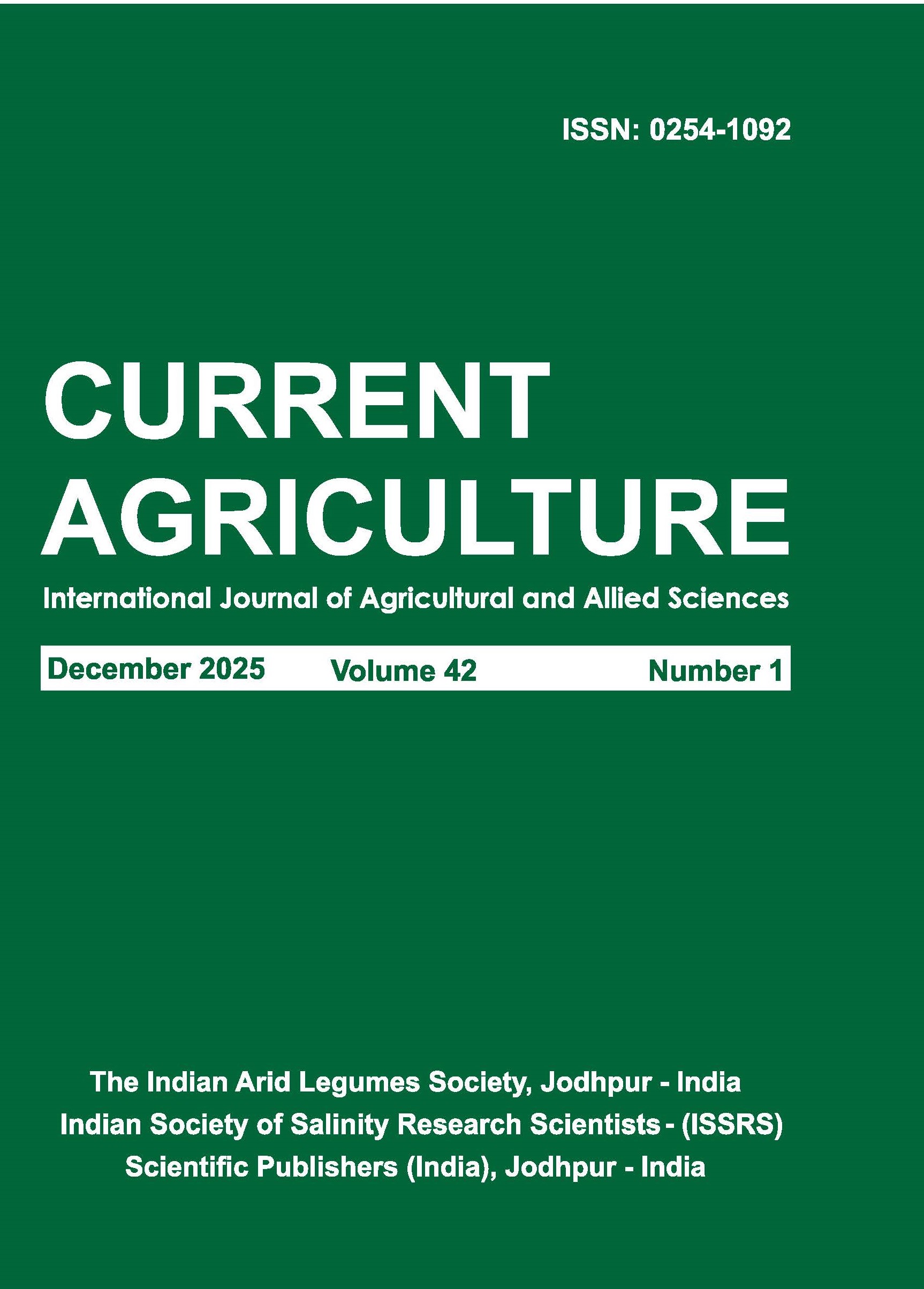Results on evaluation of promising cultivars, over planting dates, application of N in different forms,
micro-nutrients, compost doses, plant densities in reference to grain yield, guar gum yield, gum content and
viscosity have been discussed. Cultivar HG-563 in early (546.25 kg/ha) and RGC-936 in late (463.13
kg/ha) sown conditions yielded maximum, RGC-1066 gave maximum gum content (31.46%), viscosity
was maximum (435.5 cP) in RGM-112. In response to based doses application, maximum gum content
(30.83%) was observed with 20 kg N but viscosity was maximum (3238 cP) with 25 kg ZnSO4/ha. Zn
application (10 pm) in nano form was also important for gum content (31.03%) but for high viscosity, P in
nano form (40 ppm) looked important (3385 cP). Compost manure through 1.50 t/ha proved adequate for
giving gum content to the extent of 30.15%. Grain yield when averaged across the cultivars was 3 times
more in summer (1520.5 kg/ha) over rainy season (505-546.25 kg/ha) for HG-563 during rainy season.
However, range was appreciable higher during summer season from 1021 kg/ha (RGC-1066) to as high as
1950 kg/ha (HG-563). The differences were due to ecological benefits of summer season. More
appreciably, not only grain yield but % gum content also increased by about 1.5 times in summer (30.63%)
compared to rainy season (28.92%), viscosity of guar gum numerically was more in summer (3601 cP)
over kharif (3262.3 cP) season. High grain yield and gum content ultimately increased gum yield by about
320 kg/ha in summer season. The grain yield across eight varieties in 2012 was maximum with 60
plants/plot (415.69 kg/ha), followed by 90 and 30 plants geometry per plant basis.






